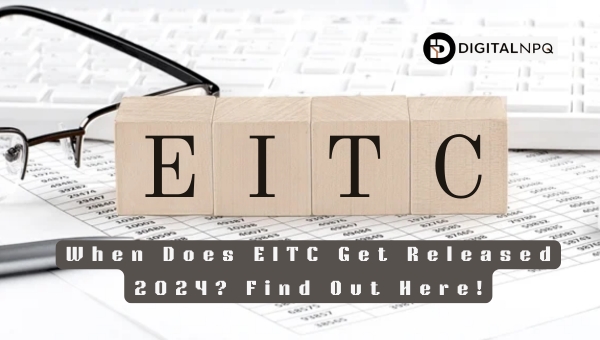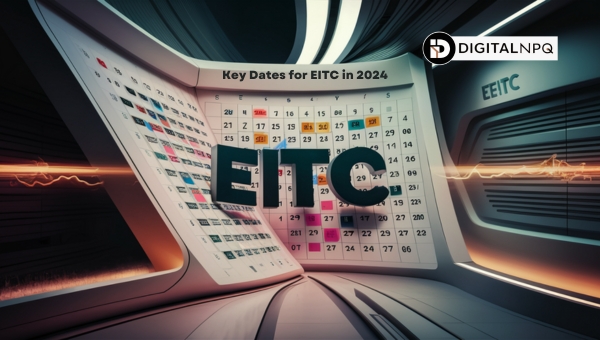When Does EIC Get Released 2024? Find Out Here!

Curious about when EIC will be released in 2024? This article will walk you through the key dates, eligibility criteria, and filing tips for the Earned Income Tax Credit (EITC) in 2024. We’ll delve into how to qualify, claim, and receive your EIC refund.
Additionally, we’ll highlight important tax deadlines and common errors to avoid. By the end, you’ll be well-prepared to navigate the EITC process smoothly and maximize your tax benefits. Dive in to ensure you’re ready for the 2024 tax season!
Understanding the EITC
The Earned Income Tax Credit (EITC) is a federal tax credit aimed at supporting low- to moderate-income working individuals and families. Its primary goal is to reduce poverty and encourage employment by offering financial relief through tax refunds.

This credit is particularly beneficial for families with children, as the amount of the credit increases with the number of qualifying children. By providing this financial assistance, the EITC helps to enhance the economic stability of working families.
How does the EITC Work?
Individuals and families can benefit from the EITC based on their income level. Here’s how it works:
- Income-Based: The credit is based on earned income, which includes wages, salaries, and self-employment income.
- Refundable Credit: Eligible taxpayers can receive a refund that exceeds the amount of taxes they owe.
- Varying Amounts: The amount of the EITC varies depending on income level, filing status, and the number of qualifying children.
- Income Limits: For instance, in 2023, a single filer with no children could receive a credit if their income was below $17,640, while those with three or more qualifying children could earn up to $56,838 and still qualify for the credit.
By understanding these points, taxpayers can better navigate the EITC and maximize their potential benefits.
Also Read: Direct Deposit Payment Eligibility 2024: Must-Know Criteria
Key Dates for EITC in 2024
As we approach the 2024 tax season, it is essential to keep track of crucial dates concerning the Earned Income Tax Credit (EITC). Understanding these dates will help you maximize your benefits and ensure timely filing.

Let’s dive into the specifics of when you can expect the Earned Income Credit (EIC) to be released and the important tax deadlines you need to be aware of.
When Will EIC Be Released in 2024?
The IRS has announced that the 2024 tax season will kick off on January 29, 2024. Here’s what you need to know about the release of EIC payments:
- Processing Begins: EITC refunds will start being processed shortly after the tax season begins.
- Timeline: The IRS aims to distribute these refunds efficiently to eligible taxpayers.
- Communication: Specific release dates will be provided by the IRS, so stay tuned for updates.
Keeping these points in mind will help you plan better for the arrival of your EIC refund.
Important Tax Deadlines for 2024
Marking your calendar with key tax deadlines is vital for a smooth filing process. Here are some crucial dates to remember for the 2024 tax year:
- January 29, 2024: The official start of the tax season.
- April 15, 2024: Deadline for filing individual income tax returns.
- Retirement Contributions: Deadline for contributions to retirement accounts that may impact your EITC eligibility.
Being aware of these important dates will help you avoid penalties and maximize your tax benefits.
How to Qualify for the EITC?
To determine eligibility for the Earned Income Tax Credit (EIC), understanding the specific criteria is essential. Let’s break down the requirements for both families with children and individuals without children. This will help ensure you know exactly what you need to qualify and maximize your potential refund.

Who Counts as a Qualifying Child?
To qualify for the EIC with a child, the child must meet several criteria:
- Relationship: The child must be your son, daughter, stepchild, foster child, or a descendant of any of them (such as your grandchild). Siblings, half-siblings, or a descendant of any of them (such as your niece or nephew) also qualify.
- Age: The child must be under 19 years old at the end of the tax year, or under 24 if a full-time student. If the child is permanently and totally disabled, there is no age limit.
- Residency: The child must have lived with you in the United States for more than half of the tax year.
- Joint Return: The child cannot file a joint return for the tax year unless it was filed only to claim a refund.
Make sure you have the necessary documentation, such as birth certificates, school records, or other official documents to prove these criteria.
Can You Claim the EIC Without a Child?
Yes, individuals without a qualifying child can still claim the EIC under certain conditions:
- Age: You must be at least 25 years old but under 65 at the end of the tax year.
- Residency: You must have lived in the United States for more than half of the tax year.
- Dependency: You cannot be claimed as a dependent or qualifying child on another person’s tax return.
- Income: Your earned income and adjusted gross income (AGI) must be below the set limits for the tax year.
This allows a broader range of low-income workers to benefit from the EIC, providing financial support even if they do not have dependents. Be sure to accurately report your income and meet all the criteria to qualify.
Also Read: Credit One Bank Card: Your Guide to Features and Management
How to Claim the Earned Income Credit?
Claiming the Earned Income Credit (EIC) can be straightforward if you know the steps. Whether you’re new to filing or need a refresher, understanding how to navigate this process is crucial.
Below, we’ll break down the essential steps to help you successfully claim your EIC.
Filing Your Tax Return
To claim the EIC, you’ll need to file a federal income tax return, even if you don’t owe any taxes.
Here’s how to include your EIC claim:
- Gather Required Documents: Ensure you have all necessary documents, including W-2s, 1099s, and any other income records.
- Complete the Necessary Forms: Fill out Form 1040 and Schedule EIC if you have qualifying children. Ensure all information is accurate.
- Double-Check Your Information: Verify that all details, such as Social Security numbers and income amounts, are correct to avoid delays.
- Submit Your Tax Return: You can file electronically or by mail. E-filing is faster and often more efficient.
Different Ways to File Your Taxes
There are several methods available for filing your taxes. Each has its own advantages, so choose the one that best suits your needs:
- Online Services: Many online tax preparation services offer step-by-step guides to help you file. Some even provide free filing for eligible taxpayers.
- Professional Help: Hiring a tax professional can be beneficial, especially if you have a complex tax situation. They can ensure all credits and deductions are accurately claimed.
- Self-Filing: If you’re comfortable with tax forms, you can file your taxes yourself using paper forms or tax software. This method can be cost-effective but requires careful attention to detail.
By following these steps and choosing the right filing method, you can effectively claim your Earned Income Credit and maximize your refund.
Receiving Your EIC Refund
Getting your Earned Income Credit (EIC) refund can be a crucial financial boost. Understanding how the EIC affects your refund timing and ensuring you access your refund safely are essential steps in this process. Let’s dive into these important aspects.
How The EIC Affects Your Refund Timing?
Claiming the Earned Income Credit can influence when you receive your tax refund. Here’s how:
- Processing Time: The IRS takes additional time to process EIC claims to prevent fraud. Expect a delay compared to standard refunds.
- Early Filers: If you file early in the tax season, your EIC refund will still be delayed, typically arriving several weeks after filing.
- Direct Deposit: Choosing direct deposit can speed up the refund process, even though EIC claims take longer to process.
Accessing Your Refund Safely
Receiving and using your tax refund securely is important. Follow these tips for safe access:
- Direct Deposit: Opt for direct deposit into your bank account. It’s faster and reduces the risk of lost or stolen checks.
- Secure Information: Be cautious with your personal information. Use trusted tax preparation services to avoid scams.
- Check Status: Regularly check the status of your refund using the IRS “”Where’s My Refund?”” tool to stay informed about your refund’s progress.
Common Errors to Avoid
When claiming the Earned Income Credit (EIC), it’s crucial to be aware of common errors that can delay or reduce your refund. Mistakes such as incorrect income reporting, failing to meet eligibility criteria, and not providing the necessary documentation for qualifying children are frequent pitfalls.
To mitigate these issues, it’s essential to take advantage of resources designed to help you prepare your taxes accurately.
Free Self-Preparation Services
To avoid common mistakes while claiming the Earned Income Credit, there are several free resources available:
- IRS Free File: The IRS offers a free filing option for taxpayers with income below a certain threshold. This service provides step-by-step guidance to ensure accurate filing.
- Volunteer Income Tax Assistance (VITA): VITA programs offer free tax help to individuals who qualify. Trained volunteers can assist you with preparing your tax return, ensuring you claim the correct EIC amount.
- Tax Counseling for the Elderly (TCE): TCE provides free tax assistance to those aged 60 and older. This service focuses on issues unique to seniors, including claiming the EIC.
- Online Tax Preparation Software: Several companies offer free versions of their tax preparation software for eligible taxpayers. These platforms guide you through the process, reducing the likelihood of errors.
- Local Community Resources: Many community organizations provide free tax preparation services. Check with local libraries, community centers, or non-profit organizations for available programs.
By utilizing these free self-preparation services, you can ensure your tax return is accurate, complete, and filed on time, thereby maximizing your EIC refund.
FAQs
When should I expect my EITC refund?
You can expect your EITC refund a few weeks after filing your tax return, especially if you file electronically and choose direct deposit. The IRS typically starts processing refunds after January 29, 2024.
What day of the week does the IRS deposit refunds?
The IRS generally deposits refunds on weekdays, from Monday to Friday. The exact day can vary depending on when your tax return was processed.
Can you get both EITC and child tax credit?
Yes, you can receive both the Earned Income Tax Credit (EITC) and the Child Tax Credit (CTC) if you meet the eligibility requirements for both. These credits are designed to provide additional financial support to qualifying families.
Conclusion
In summary, understanding the intricacies of the Earned Income Tax Credit (EITC) is crucial for maximizing your tax refund and ensuring financial stability. By staying informed about key dates, eligibility requirements, and filing procedures, you can effectively navigate the tax season and secure the benefits you are entitled to.
For more insightful articles and detailed guides on tax-related topics, be sure to explore our other blogs. Stay informed and empowered with our comprehensive resources!
